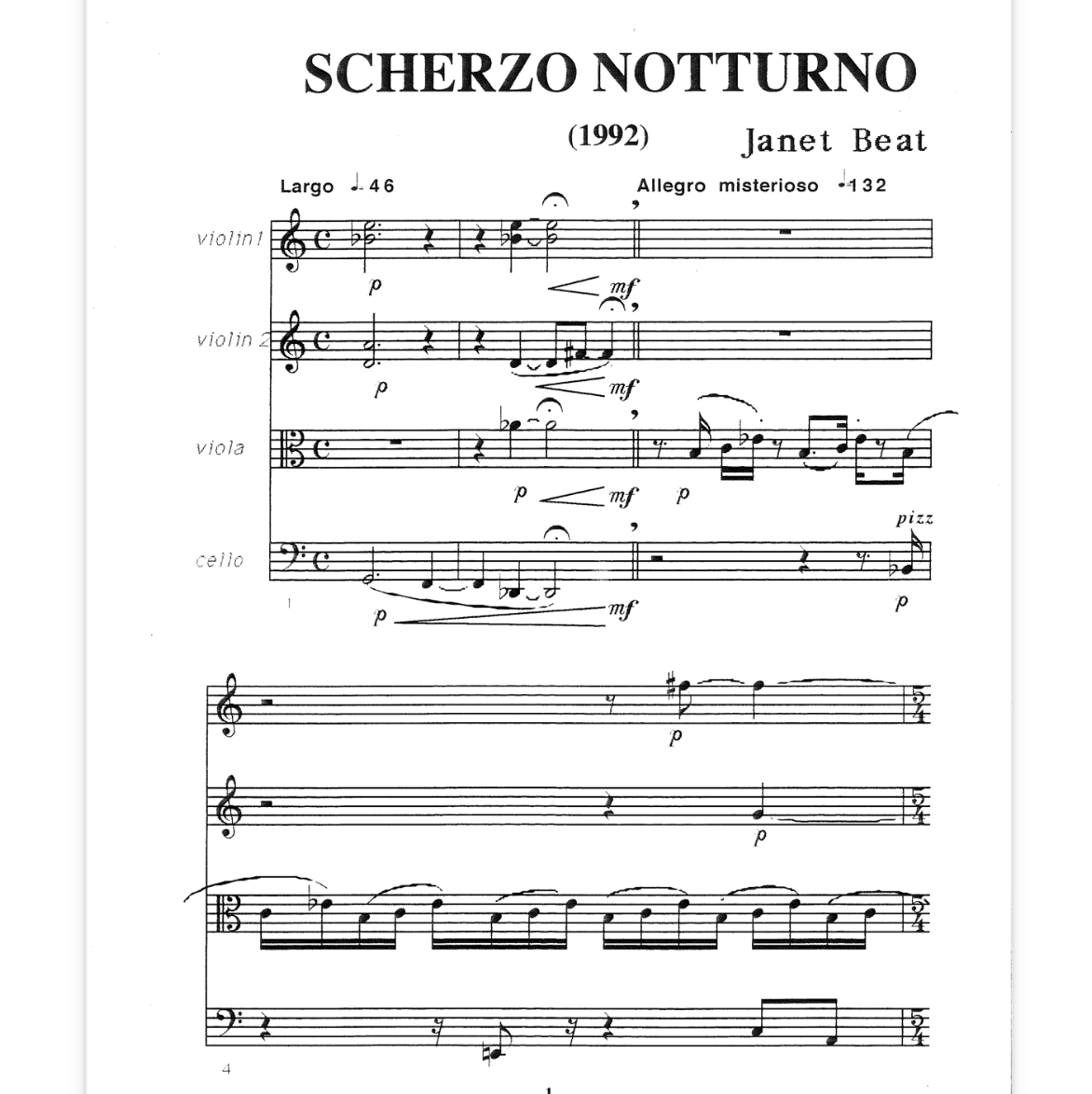 Image 1 of 2
Image 1 of 2

 Image 2 of 2
Image 2 of 2



Thomas Wilson: String Quartet No 4 [download]
Composed 1978. Commissioned by the Edinburgh Quartet, with the financial assistance of the Scottish Arts Council and various private donors.
It is dedicated to the Edinburgh Quartet and first performed by them on BBC TV in January 1979.
The work is played continuously, but falls into five clearly defined parts.
The first of these, mostly slow, introduces in compressed form the various ideas which are later to be developed. It ends with a calm chorale-like passage, a particular feature of which is a reiterated monotone. This idea is used to punctuate the work like a refrain.
The second section is a fast, rhythmically erratic scherzo which combines overall delicacy with moments of fiery vehemence.
The slow third section is a loosely-articulated aria for solo violin, though this also features a more impassioned and vigorous central statement. This is short-lived, and the original mood is restored by the chorale-refrain. This time however, the arioso character is less sustained and more episodic, finally converging on a repeated monotone.
The fourth section is the most weighty part of the work. Here the vehemence hinted at earlier in the music is given freer rein. Moments of delicacy and lyricism are still present, but they are increasingly swept aside as the piece gathers momentum. After the point of climax has been reached, tension is quickly dissipated.
The chorale refrain introduces the last section, a Coda. This acts as a counterpart to the opening, providing a brief, condensed recapitulation of some of the work's principal ideas. Finally, all that remains is the slowly reiterated monotone. But even this apparent stability is qualified at the last moment.
Composed 1978. Commissioned by the Edinburgh Quartet, with the financial assistance of the Scottish Arts Council and various private donors.
It is dedicated to the Edinburgh Quartet and first performed by them on BBC TV in January 1979.
The work is played continuously, but falls into five clearly defined parts.
The first of these, mostly slow, introduces in compressed form the various ideas which are later to be developed. It ends with a calm chorale-like passage, a particular feature of which is a reiterated monotone. This idea is used to punctuate the work like a refrain.
The second section is a fast, rhythmically erratic scherzo which combines overall delicacy with moments of fiery vehemence.
The slow third section is a loosely-articulated aria for solo violin, though this also features a more impassioned and vigorous central statement. This is short-lived, and the original mood is restored by the chorale-refrain. This time however, the arioso character is less sustained and more episodic, finally converging on a repeated monotone.
The fourth section is the most weighty part of the work. Here the vehemence hinted at earlier in the music is given freer rein. Moments of delicacy and lyricism are still present, but they are increasingly swept aside as the piece gathers momentum. After the point of climax has been reached, tension is quickly dissipated.
The chorale refrain introduces the last section, a Coda. This acts as a counterpart to the opening, providing a brief, condensed recapitulation of some of the work's principal ideas. Finally, all that remains is the slowly reiterated monotone. But even this apparent stability is qualified at the last moment.

![Claire McCue: Beauty and the Beastie [download]](https://images.squarespace-cdn.com/content/v1/5f3690f6995b741710ab4824/1612202350086-AU807PHSIHOE9C1PK802/laire-beauty.png)


![Janet Beat: Concealed Imaginings [download]](https://images.squarespace-cdn.com/content/v1/5f3690f6995b741710ab4824/1650638645151-ZM2SWAYERSRV7K42LTES/cover.png)


![Janet Beat: Scherzo Notturno [download]](https://images.squarespace-cdn.com/content/v1/5f3690f6995b741710ab4824/1650639968297-FI1LBDKQPUAQIHGSXNAV/cover.png)


![William Wordsworth: Four Lyrics [download]](https://images.squarespace-cdn.com/content/v1/5f3690f6995b741710ab4824/1612793401392-ALLGKW20HHY2T6M1FRE6/wordsworth-four.png)



![Claire McCue: After the Before [download]](https://images.squarespace-cdn.com/content/v1/5f3690f6995b741710ab4824/1612202795942-XF83UFURM3FACUAFGV6O/claire-after.png)


